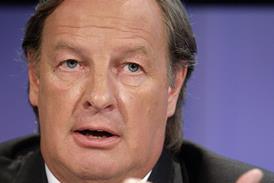Libor abuse is the latest of many sticks available to critics with which to flog the banking piñata, but as the Treasury Select Committee circled around former Barclays chief executive Bob Diamond on 5 July to take turns waving it his way, it became clear that the full details of the fiasco had not been spilled by the Financial Services Authority notice on 27 June. In terms of civil litigation against banks, it remains to be seen how Libor manipulation will be most effectively deployed, but there are some promising avenues.
Already some have noted that, with a rigged rate deviating from the legitimate Libor by as little as one to five hundredths of a per cent, the adverse impact on an aggrieved customer or counterparty might be low. But even if that were right, this ignores contracts and trades which are ‘triggered’ when a rate reaches a certain level, and it stands to reason that they must have caused a loss to someone if it was worth the while of those 14 or more Barclays traders.
Also largely ignored is the potentially large window into the rescission, or unwinding, of a contract founded upon a manipulated Libor rate. The argument at the heart of such a claim would be that Barclays, on offering a loan, overdraft, swap or other product linked to Libor, made an implied but false representation that it was not aware of any conduct which was likely to undermine Libor, and that it was not party to any such conduct.
An implied representation likely exists where it would be reasonable for a customer to assume that "Libor is Libor" and in the circumstances he would not know that "Libor is rigged Libor". The representation might be more explicit where the contract makes express reference to Libor, as many loans to corporate borrowers do. Either way, thanks to the FSA, both representations now appear to be demonstrably false. Potential claimants will also need to show that the false representation induced them to enter into the contract.
That will not, one would have thought, be difficult. Showing that the interest rate was fundamental to the contract will stand a claimant in good stead, even more so where he can evidence negotiations over the contractual interest rate down to a precise level, such as a tenth or hundredth of a per cent. Likewise, that level of granularity and negotiation would help a claimant to show that the bank could foresee that a claimant might act on its misrepresentation.
Although claimants might successfully prove misrepresentation without showing that a bank knowingly or recklessly made false representations (i.e., fraudulently), it may still be possible to do so in light of the material disclosed by the FSA. Although the hurdles here are much higher, this may be the only option available to a claimant who cannot get damages or rescind the contract if, say, it has become impossible to restore the parties to their positions before the contract was agreed. In addition, exclusion clauses in certain swap contracts may make a claim for anything other than fraud more challenging.
To prove fraud, a claimant must show that Barclays lacked an honest belief that the representation was true, or was careless as to its truth. But what does it mean to say that Barclays 'believed'? Can the intentions of the culpable traders be attributed to Barclays as a whole as the counterparty to a loan or swap agreement? Once it is proved that the instruction to manipulate Libor came from within Barclays’ management, it is highly arguable that management’s dishonest state of mind will be attributed to the bank as a whole.
Perhaps the most important aspect to a claim in misrepresentation based on Libor manipulation would be that the claimant’s losses would not need to be huge to make bringing a claim worthwhile (or even to entitle him to do so). In a claim for breach of contract, a difference of one to five hundredths of a per cent might not amount to much in the way of damages, but if a claimant can prove that the bank negligently or fraudulently represented that Libor was legitimate, he stands to get everything back that he paid out under the contract. A successful claim would put him in the position he would have been in had he not entered into the contract.
Take, for example, a Libor-linked interest-rate swap that has become disadvantageous for a customer now that interest rates are so low. If it was correctly sold, the customer is stuck with a loss-making contract. If, however, the customer can prove that the bank negligently or fraudulently represented that Libor was legitimate, it doesn’t matter that the one to five manipulated basis points might not account for much of what the customer is paying out under the swap: the claimant could get damages that would put him back in a position where he never entered into the swap - that is, everything he paid to the bank under the contract. This would be an appropriate tack for a borrower that simply wanted out, and where the customer has other grounds to allege mis-selling, it would be another arrow for his quiver.
It is clear that any potential claimant will have hurdles to tackle, both factual and legal, before he can obtain satisfaction in court, not least of which is whether sterling Libor was affected. Limitation of liability clauses in contracts will also no doubt be an issue for would-be litigants. Equally, however, with Libor so fundamental to a monumental number of financial transactions, it seems likely that many will at least try their luck in the courts, and the ongoing investigations in the UK, US and Brussels may make the exercise easier. Disgruntled former employees, perhaps let go as a result of the scandal itself, could return to haunt their ex-employers by acting as valuable sources of evidence.
And with a dozen other banks under scrutiny, Barclays et al will struggle to defend allegations that Libor was in fact manipulated, and grow the pool of potential defendants.
Sam Roberts is an associate solicitor at Cooke, Young & Keidan. CYK is a leading boutique litigation law firm based in the City of London, specialising in complex and high-value commercial and financial dispute resolution



























No comments yet